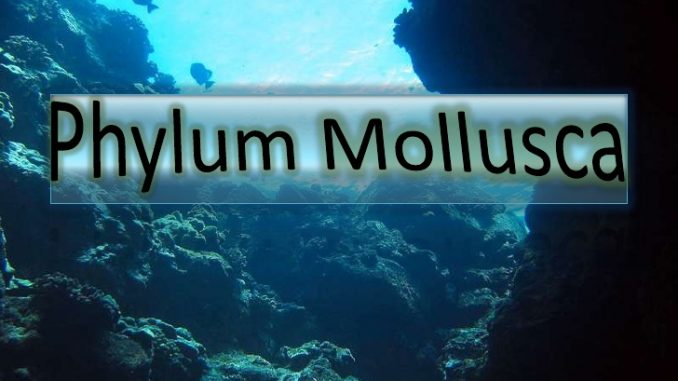
General Characteristics of Phylum Mollusca
- (Mollis or molluscs: soft)
- Kingdom: Animalia
- Habitat: Mostly aquatic and few are terrestrial
- Body is soft without segmentation
- Grade of organization: Organ system grade
- Germ layer: Triploblastic
- Symmetry: BIlaterally symmetry
- The body is divided into head, muscular foot and visceral mass.
- The body is covered by a mantle and a shell
- Respiration: by gills (ctinidia) in the mantle cavity. lungs in terrestrial forms
- Digestive system: Complete and developed
- Circulatory system: Closed type
- Heart consists of one or two auricle and one ventricle
- Excretion: pair of Metanephridia (Kidney)
- Nervous system: consists of three pair of ganglia (cerebral, visceral and pedal)
- Sexes: Dioecious and few are hermaphrodite
- Reproduction: gamatic fusion
- Fertilization: external or internal
- Development: direct or indirect by trochophore larvae.
Classification of Phylum Mollusca
There are six classes of which three are more prominent.
Class 1 Pelecypoda or Bivalvia
- Habitat: mostly marine
- They burrow in mud and sand.
- Symmetry: bilateral and the body is laterally compressed.
- No distinct head
- Examples: Mussels, Unio, Mytilus,
Class 2 Gastropoda
- Habitat: These are either aquatic or terrestrial
- They possess a spiral shell.
- The foot is large and flat.
- Head is well developed with tentacles and eyes.
- Examples: Hilex (Snail), Limax (Slug), Pila (Apple snail)
Class 3 Cephalopoda
- Habitat: mostly marine.
- They are adapted for swimming.
- The foot is modified into eight to ten long tentacles in the head region.
- The shell is either external, internal or absent.
- Examples: Octopus, Loligo, Sepia, spirula, Nautilus
Class 4 Monoplacophora
- Habitat: exclusively marine
- Head is present without eyes and tentacles
- Gills are external
- Excretion: by serially arranged nephridia
- Examples:
Class 5 Amphineura
- Habitat: mostly marine
- Body is elongated
- Eye and tentacles are absent
- Radula is present
- Examples; Chiton, Neomenia
Class 6 Scaphopoda
- Habitat: marine
- Body is bilateral symmetry elongated and enclosed in tusk shell
- Foot is reduced
- Excretion: a pair of Kidney
- Examples: Cadulus, Dentalium
